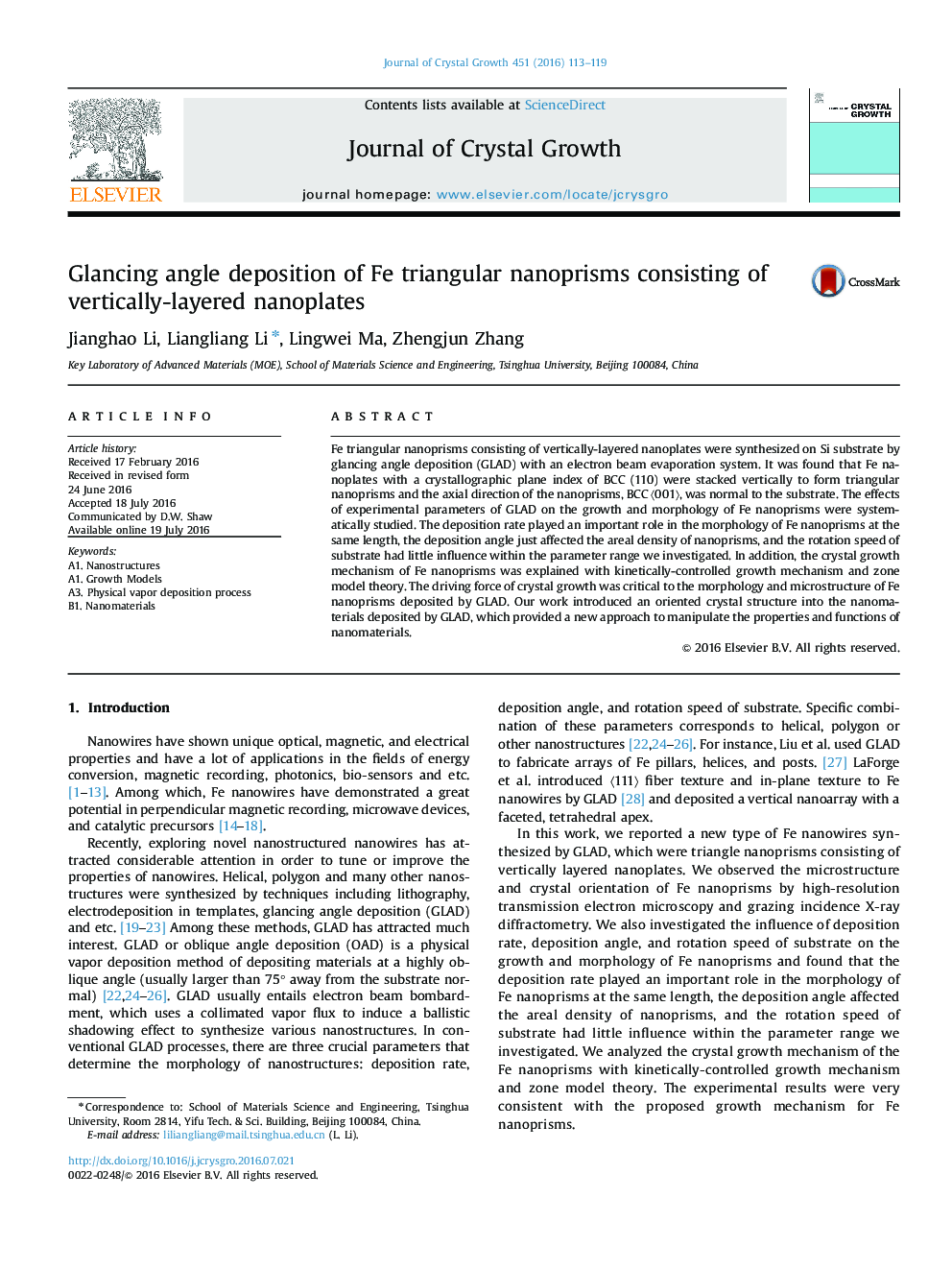| Article ID | Journal | Published Year | Pages | File Type |
|---|---|---|---|---|
| 1789474 | Journal of Crystal Growth | 2016 | 7 Pages |
Abstract
Fe triangular nanoprisms consisting of vertically-layered nanoplates were synthesized on Si substrate by glancing angle deposition (GLAD) with an electron beam evaporation system. It was found that Fe nanoplates with a crystallographic plane index of BCC (110) were stacked vertically to form triangular nanoprisms and the axial direction of the nanoprisms, BCC ã001ã, was normal to the substrate. The effects of experimental parameters of GLAD on the growth and morphology of Fe nanoprisms were systematically studied. The deposition rate played an important role in the morphology of Fe nanoprisms at the same length, the deposition angle just affected the areal density of nanoprisms, and the rotation speed of substrate had little influence within the parameter range we investigated. In addition, the crystal growth mechanism of Fe nanoprisms was explained with kinetically-controlled growth mechanism and zone model theory. The driving force of crystal growth was critical to the morphology and microstructure of Fe nanoprisms deposited by GLAD. Our work introduced an oriented crystal structure into the nanomaterials deposited by GLAD, which provided a new approach to manipulate the properties and functions of nanomaterials.
Related Topics
Physical Sciences and Engineering
Physics and Astronomy
Condensed Matter Physics
Authors
Jianghao Li, Liangliang Li, Lingwei Ma, Zhengjun Zhang,
